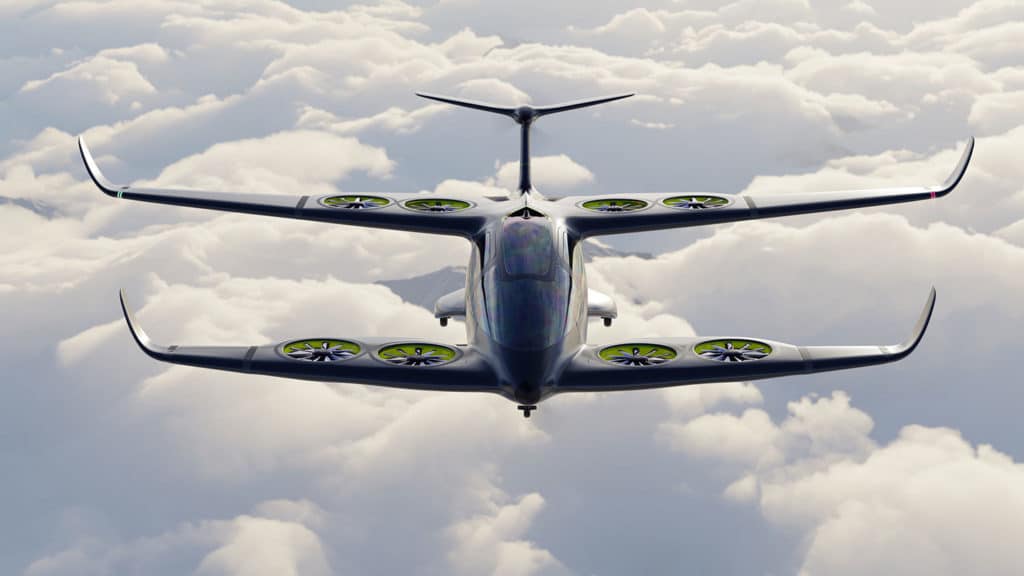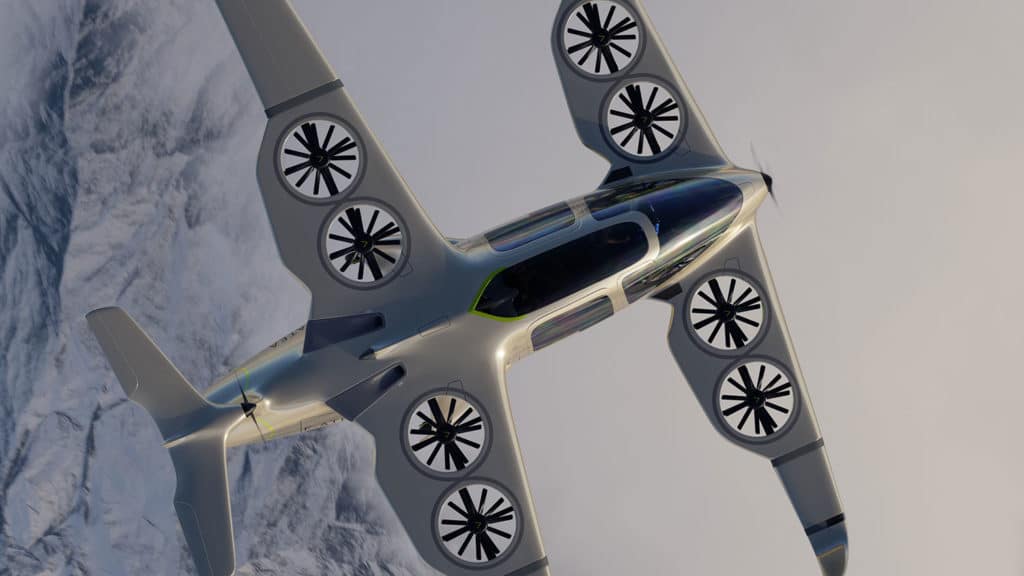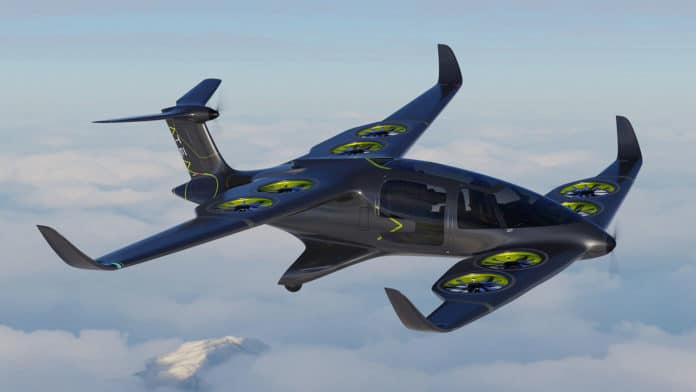After three years of research and development, a French startup company Ascendance Flight Technologies, has unveiled the design of ATEA, its 5-seater vertical take-off and landing aircraft designed as a clean, quiet and efficient alternative to the helicopter.
The ATEA hybrid-electric aircraft blends sleek and audacious design with unprecedented “fan-in-wing” technology and optimized engine configuration. Equipped with tailor-made modular hybrid engines developed by Ascendance Flight Technologies, ATEA is tomorrow’s aircraft designed to satisfy the high demands of both passengers and stakeholders of reinvented aviation.
The aircraft design features a modular hybrid-electric propulsion system patented by Ascendance called STERNA. This system is devised on an electric engine powered by the merging of two energy sources: combustion and electric (battery). Over time, the company is planning to phase out the combustion energy source and replace it with new sources of cleaner energy such as hydrogen or Sustainable Aviation Fuel.

ATEA has eight new-generation rotors integrated into two fixed wings and a T-shaped tail. The number of rotors guarantees maneuverability of the aircraft in case of failure, with resilience being compliant with regulatory requirements.
The “Lift + Cruise” configuration of the aircraft provides separation of vertical and horizontal flight, which are ensured by the rotors for the former and by propellers located in the nose and tailfin for the latter. The resulting absence of pivoting mechanisms, therefore, reduces the risk of failure, which also simplifies the aircraft’s certification while improving overall aircraft safety.

With its endurance of 400 km (249 miles) and reduced noise emissions, the ATEA aircraft is designed for urban and regional use in passenger transportation, tourism, medical emergencies, logistics, and surveillance. The technological innovations integrated into ATEA guarantee an optimized, easy-to-use and agile operation for the most diverse uses. According to the company, the aircraft will have carbon emissions reduced by 80% and noise pollution divided by 4.
Ascendance Flight Technologies chief and co-founder Jean-Christophe Lambert says the design of ATEA is a “concrete reflection” of the company’s values, experience, and know-how, and the result of “huge efforts” by its research teams, including tests and trials on four initial prototypes.
“ATEA will soon exist in the form of a full-scale prototype and will go into the testing phase in 2023,” said Jean-Christophe Lambert. “With help from our financial partners, we are now experiencing vigorous development. We are actively recruiting, running test and trial programs, and we are steadily moving towards our 2025 certification objective.”
